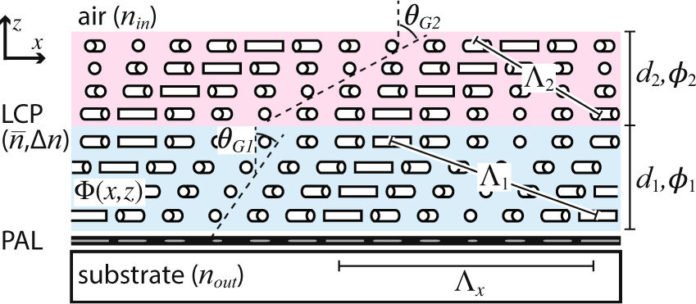Until now, state-of-the-art diffraction gratings designed to guide visible light to expansive edges have had a precise acknowledgment range, or with a bandwidth of 20 degrees. It means the light source must be coordinated into the grating inside an arc of 20 degrees.
Now, scientists at the North Carolina State University have come up with a new technology that steers light with more light input and greater efficiency. This new type of grating allows light to enter the grating from a wider range of input angles with a bandwidth of 40 degrees.
Michael Escuti, a professor of electrical and computer engineering at NC State, said, “The practical effect of this – in augmented-reality displays, for example – would be that users would have a greater field of view; the experience would be more immersive.”
Xiao Xiang, a Ph.D. student at NC State said, “In previous gratings in a comparable configuration, an average of 30 percent of the light input is being diffracted in the desired direction. Our new grating diffracts about 75 percent of the light in the desired direction. This advance could also make fiber-optic networks more energy efficient.”
The technology achieves the advance in angular bandwidth by integrating two layers, which are superimposed in a way that enables their optical reactions to cooperate. One layer contains particles that are orchestrated at a “slant” that enables it to catch 20 degrees of precise transfer speed. The second layer is orchestrated at an alternate inclination, which catches a neighboring 20 degrees of precise data transmission.
The higher efficiency stems from a smoothly varying pattern in the orientation of the liquid crystal molecules in the grating. The pattern affects the phase of the light, which is the mechanism responsible for redirecting the light.
Scientists are now working to take the advantage of these gratings and make a new generation of augmented-reality hardware.
The study is published in the journal Scientific Reports.
